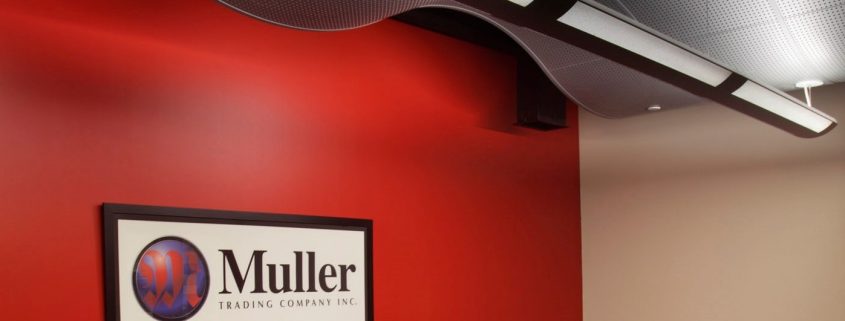Acoustical Tile Alternatives For Open Spaces
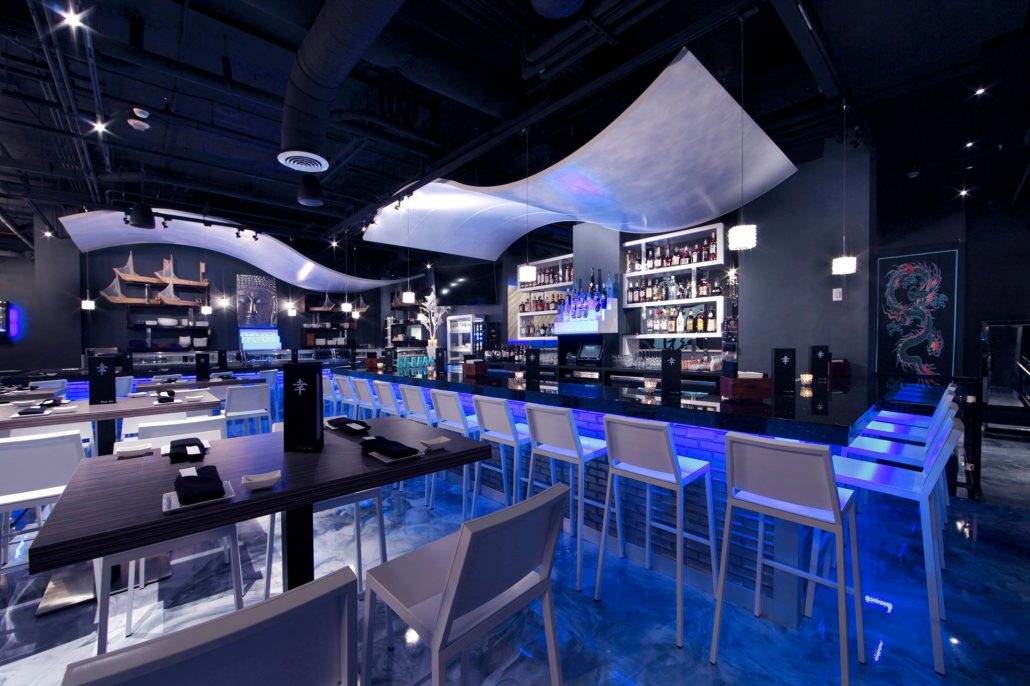
Acoustical Tile Alternatives – Shakou Restaurant in Arlington Heights Designed by Bleck & Bleck Architects.
Acoustical tile alternatives are especially suited for open spaces and buildings with exposed structures. Although traditional acoustical tile suspension systems work well in many applications, they’re not the best choice for open spaces.
You can improve acoustics and reduce noise in open spaces with acoustical tile alternatives, such as clouds, canopies, baffles, blades, and ceiling panels. They offer many benefits including flexibility, sound absorption, and aesthetic affects. Take a look at acoustical tile alternatives – they may be the right solution for your open space.
Noise in Open Spaces with Exposed Structures
Noise in open spaces is the #1 complaint of building users. Noise from conversations, activity, and building mechanical systems can be significant. And hard surfaces do not absorb sound; instead, they reflect sound back into the space. The noise interferes with building occupant effectiveness and contributes to their stress, causing decreased occupant satisfaction and an increased turnover rate.
It follows then that architects would want to minimize noise levels. But this is easier said than done. Noise in open spaces and buildings with exposed structures is notoriously difficult to control. The best way to absorb sound and minimize echoes is to add acoustical materials at the ceiling level. But open spaces with an exposed structure and exposed mechanical/electrical/plumbing systems can be hard to work around. Traditional suspended acoustical tile ceilings do not have the flexibility to work around these and they do not offer the desired open aesthetic.
To maintain an open environment while controlling noise, a different acoustical system is needed.
Acoustical Products for Open Spaces
Acoustical tile alternatives, such as clouds, canopies, baffles, blades, and ceiling panels, are a good choice for open spaces. They offer a dramatic appearance, acoustical performance, and the flexibility needed in modern, open spaces with exposed structures. Here are some good product options to consider:
Acoustical Ceiling Panels
- direct to deck application
- installed with adhesive or screws
- applied individually or in groupings
- can have the appearance of drywall
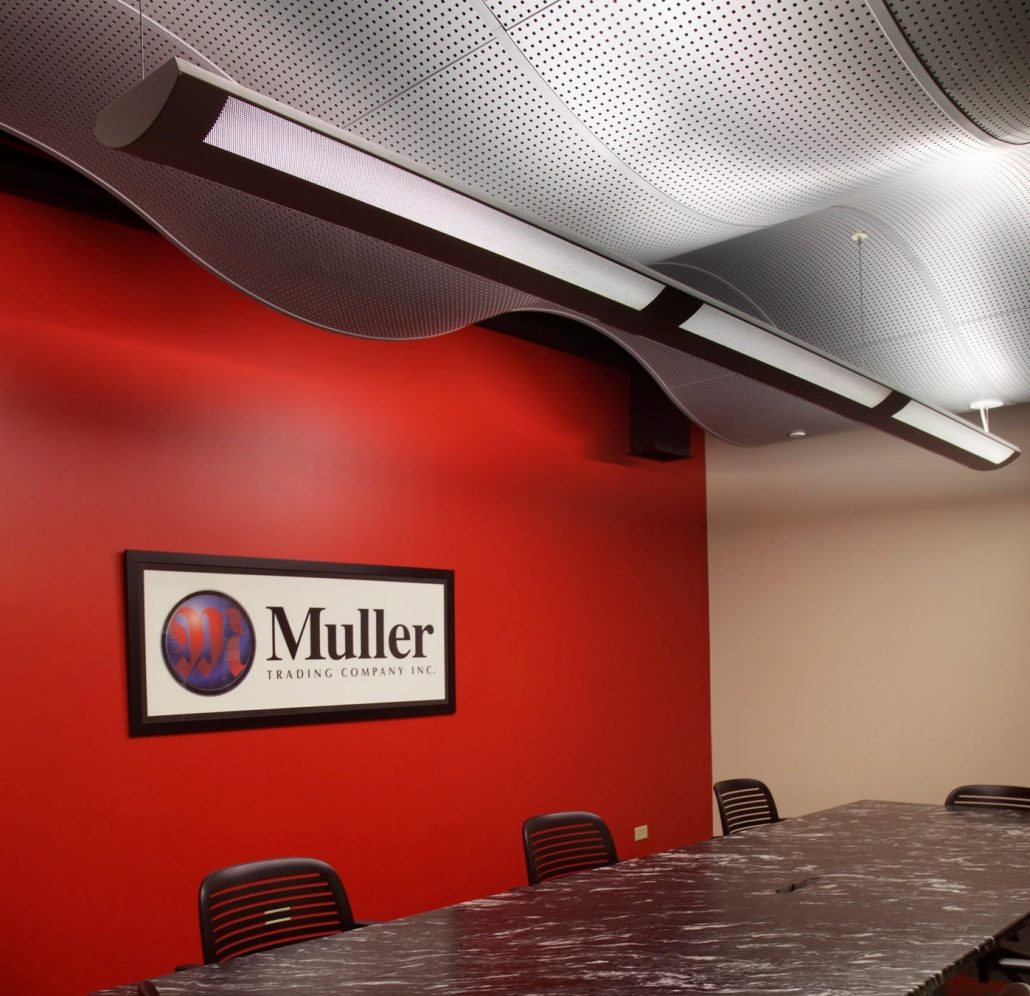
Acoustical Panels at Mueller Trading – Libertyville, IL. Designed by Bleck & Bleck Architects
Tip: Acoustical wall panels can be added to reduce echoes and improve speech recognition.
Acoustical Baffles/Blades
- hangs vertically
- 2-side sound absorption from the front and back
- linear architectural impact
- higher cost but better coverage with less product
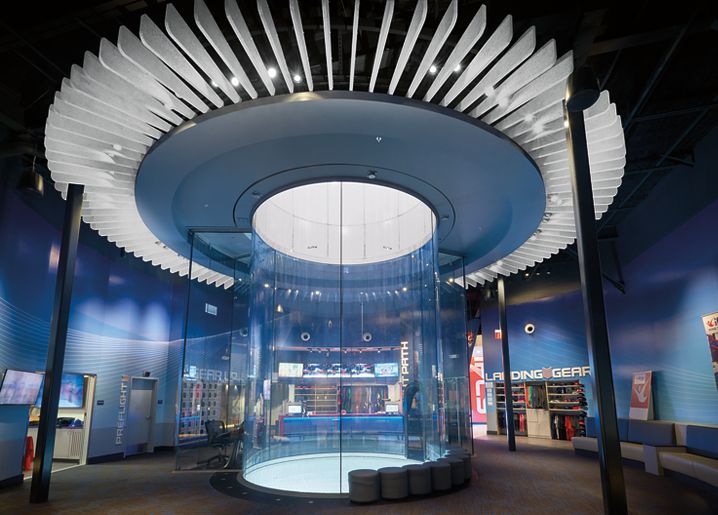
Photo Credit – Armstrong.com TECTUM Blades and Baffles.
Acoustical Clouds/Canopies
- hangs horizontally or on an angle
- 2-side sound absorption from the front and back
- higher cost but better coverage with less product
- architectural impact
- flexibility in positioning, stacking, and layering
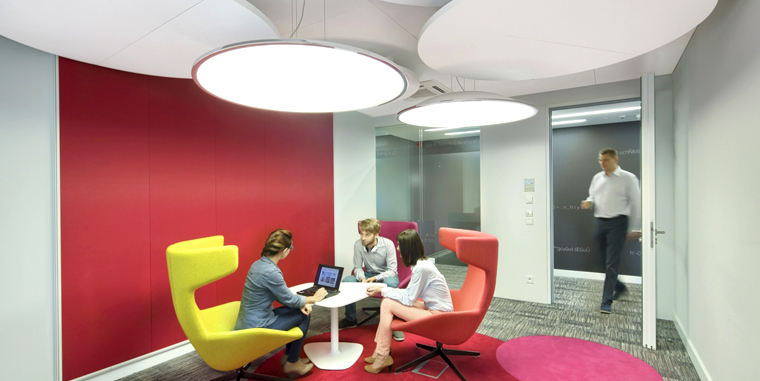
Photo Credit: Certainteed.com Acoustic Clouds
Advantages of Acoustical Tile Alternatives
Acoustical tile alternatives can be a great option for new and existing open spaces where noise levels may be high and potentially unacceptable. These high-design elements can add unique visual effects, color, and style and are especially useful in open areas, such as offices, lobbies, pavilions, large classrooms, churches, auditoriums, libraries, healthcare environments, cafeterias, and restaurants.
When selecting acoustical products, be sure to balance acoustical performance, style, durability, and cost. The result may be a more productive and pleasant environment. Here are some advantages of acoustical tile alternatives:
Aesthetic Advantages
- open aesthetic
- new more attractive products
- new colors, sizes, shapes, textures, finishes
- flexibility in positioning – suspended or direct to deck, horizontal, vertical, or angled
- selective ceiling coverage – entire ceiling area need not be covered
Technical Advantages
- better sound absorption, reduces echoes, 2-sided products absorb more sound
- many products are easy to clean
- light diffusion/reflectance characteristics
- repositionable
- fewer acoustical elements are needed to achieve the same effect
Structural Advantages
- works around structural elements, like columns and beams
- works on uneven substrates
- works around mechanical systems and ductwork
- can be installed around existing A/V systems
- works around plumbing systems and fire sprinklers
- provides acoustical remediation in existing spaces, without causing major disruption
Control Noise in Open Spaces
When fighting noise, keep in mind that using an absorptive material on the ceiling plane is the most effective strategy. Acoustical tile alternatives are especially suited to open spaces and buildings with exposed structures. We have used them successfully in new and remediation projects for several clients, including the Lake County Forest Preserve District and Shakou Restaurant. Take a look at CertainTeed, Decoustics, and Armstrong acoustical products.
Consider acoustical tile alternatives to control noise and add architectural impact, while working around structural elements and building systems in your open space.

